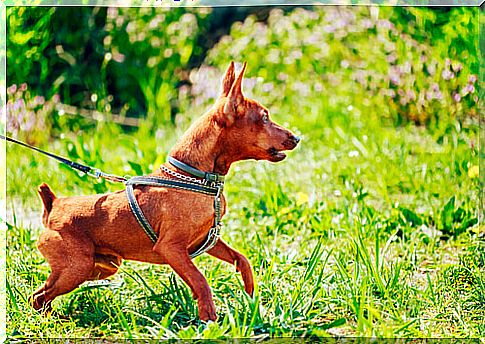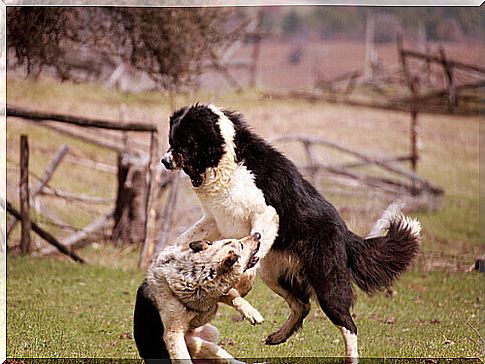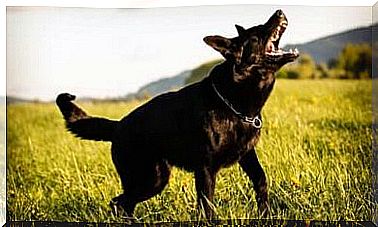Pain Makes Dogs Aggressive

Aggressive dogs are very often animals that are in pain or have suffered harm. According to some studies, pain is responsible for violent behavior. This would explain some attitudes in dogs that have received abuse, which can even go so far as to attack minors.
The causes of aggression

There are other underlying causes of threatening or aggressive behaviors in dogs, such as weaning. Studies have shown that violent dogs are not born violent, they become violent. According to some scientists, moreover, it is possible to identify aggressive traits in a dog by studying its blood.
These theses on aggression explain, for example, why a dog that sleeps quietly and peacefully curled up next to us changes after a while and violently attacks anyone who tries to steal his bowl of food or an object of his interest.
Scientists say the variables that generate aggression in dogs are many, even for peaceful dogs. Among them is pain, as well as the feeling of threat. And, as they say, pain only brings pain.
In some cases it has been shown that dogs that tend to be peaceful have proved dangerous because they felt pain. Through palpation it was shown that, in most cases, the aggressive dog suffered from a lacerating pathology – aggression was therefore generated by physical suffering.
An example in this sense are hip problems, which can cause lameness in dogs, especially in large breeds.
Attacks on children by aggressive dogs
It frequently happens that we hear news about children being attacked by violent dogs. 60% of serious attacks due to a dog bite involve minors under the age of twelve. These alarming data have always been a source of studies and research.
Physical pain is at the root of an aggressive dog’s attacks
Even when the dog has lived with his adoptive family for some time, the reality of the facts shows how the animal can be aggressive towards family members or towards strangers. One of the reasons behind such attitudes is physical pain. If the animal is inherently dangerous, its reaction will be even more violent if it is in severe pain.
Pain, in fact, further increases the aggression rate of dogs with violent antecedents. In other words, due to the pain, these animals can multiply their attacks and violent behavior in contexts in which they had already shown themselves aggressive previously, almost as if they were receiving an order.
Among the diseases that are likely to bring out violence in dogs we find hyperthyroidism, alterations to the central nervous system (intracranial tumors and other disorders that generate changes in the nervous system), as well as liver diseases.
Other causes
Not all cases of violence in dogs are linked to a physical cause, as it is logical to think. As mentioned, premature weaning of the puppy – prior to two months of age – is another factor that can trigger violent behavior in the future.
Other reasons may be lack of physical activity, stress, genetic heritage and poor socialization of the puppy or adult dog. Such factors significantly affect a dog’s potential violent traits.
Having suffered physical or psychological damage in the past also increases the chances of the animal being aggressive. Phenomena such as sadness, symptoms of depression, as well as lack of confidence and the occurrence of violent behavior, can all be a consequence of the abuse received.
Blood can tell us a lot

Analyzing a dog’s blood can be used to identify aggressive dogs. Some tests have in fact shown how, through the study of an animal’s blood hormones, its nature can be understood.
Through the analysis of blood, for example, it was found that the quantities of the neurotransmitter called serum serotonin are lower in violent animals than in serene and calm dogs. At the same time, their blood also contains a greater number of cortisone hormones.
If you have a large breed dog and are concerned that they may have aggressive tendencies, blood tests will give you feedback.








